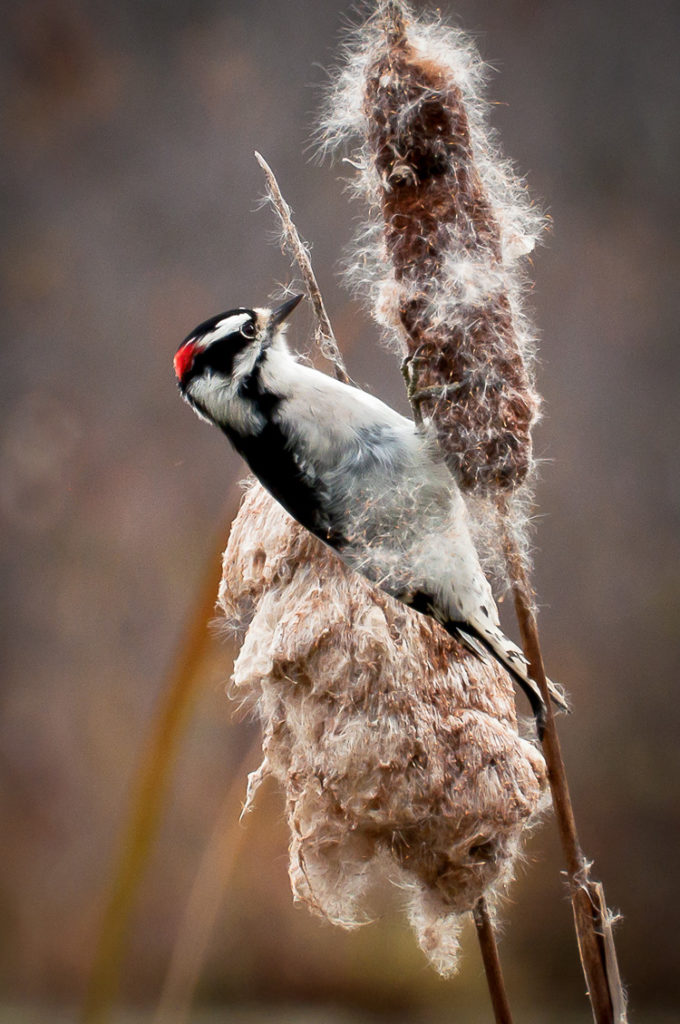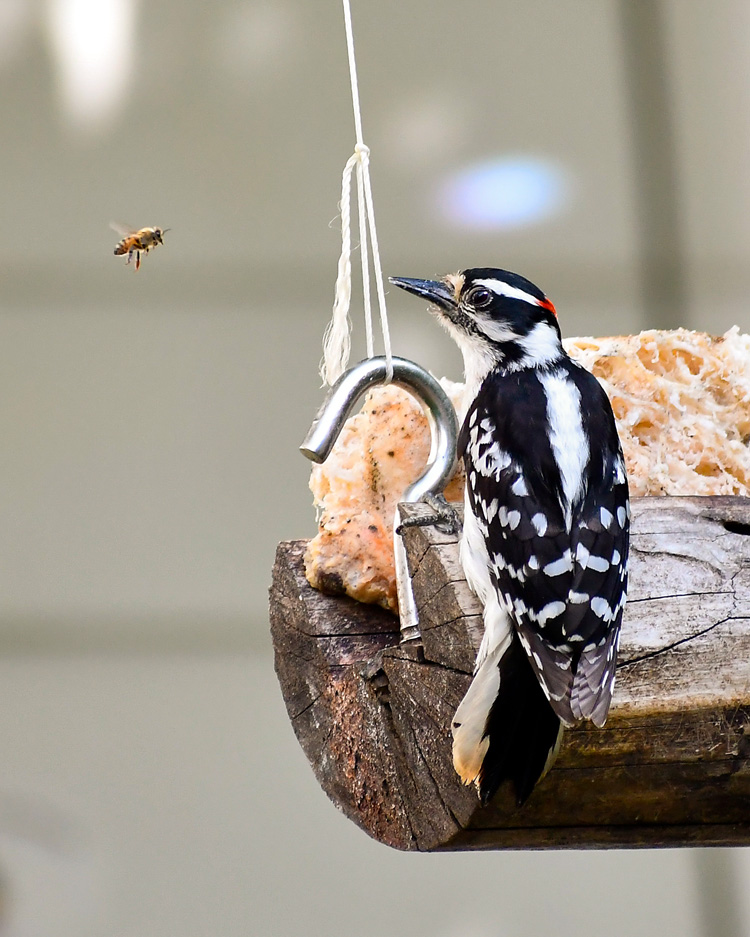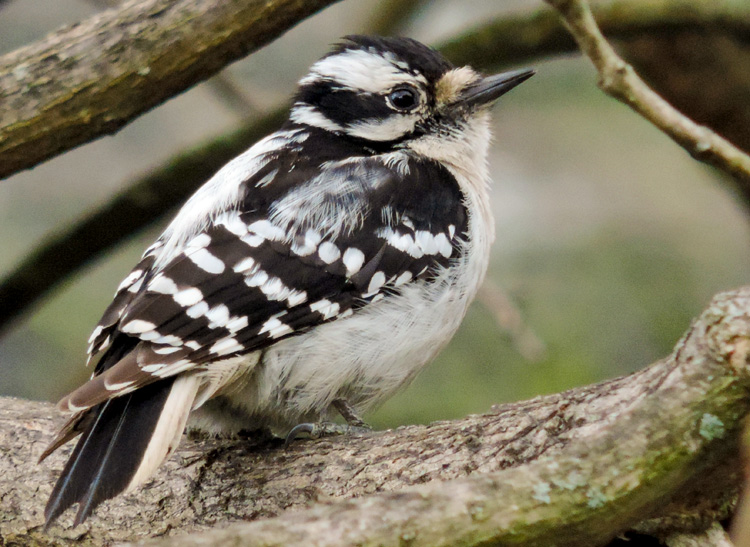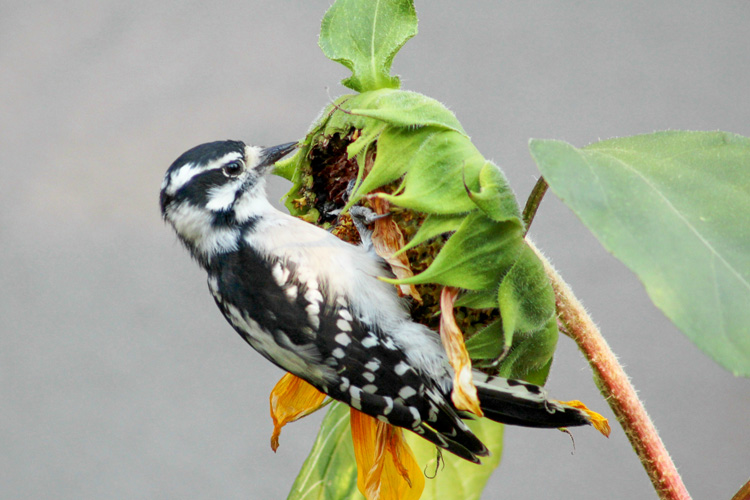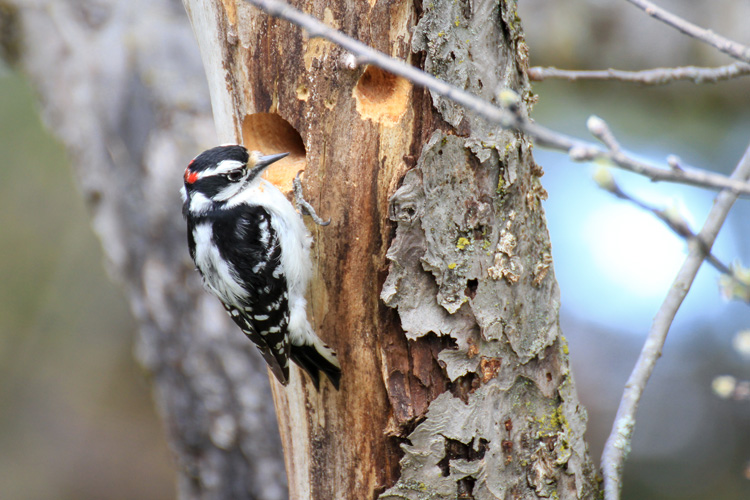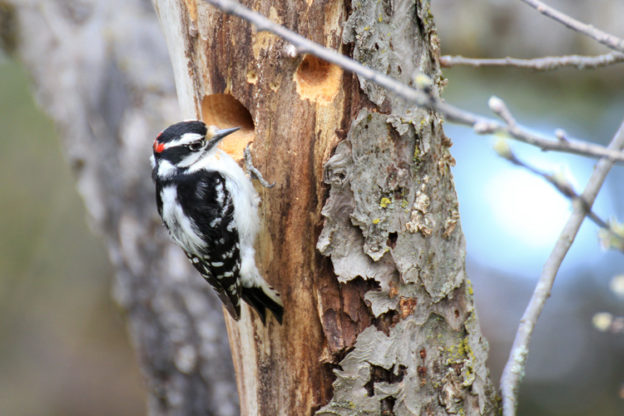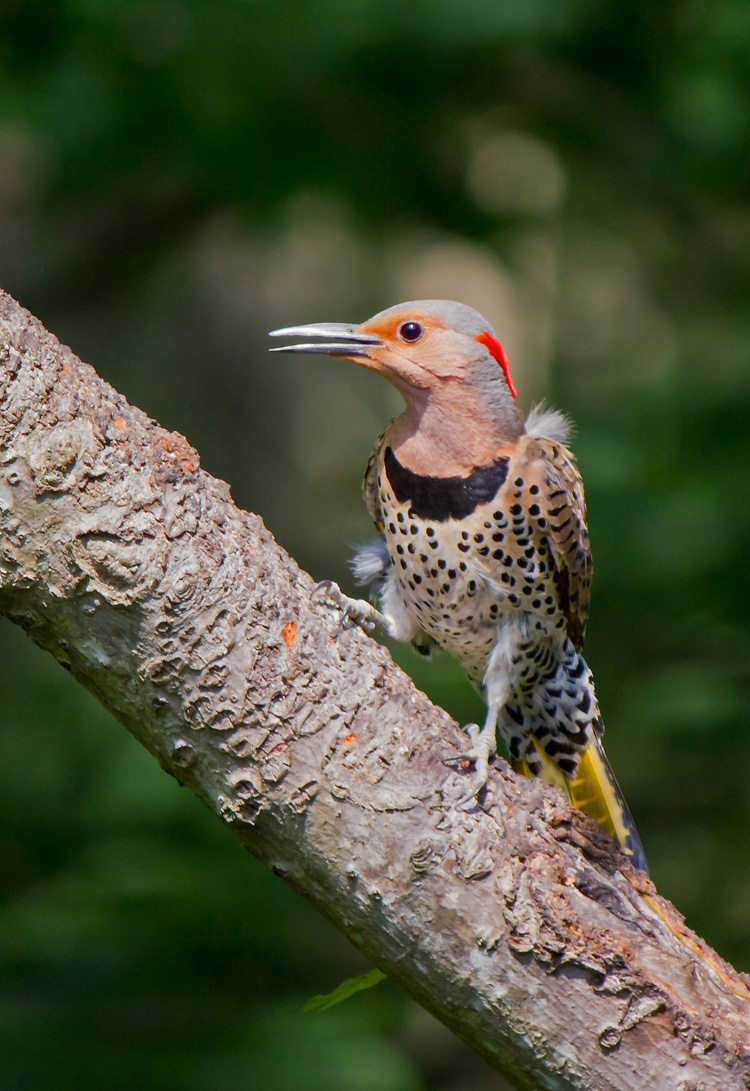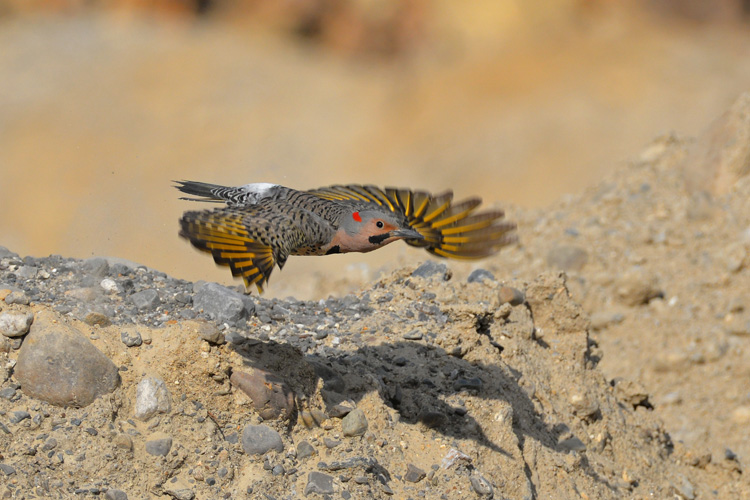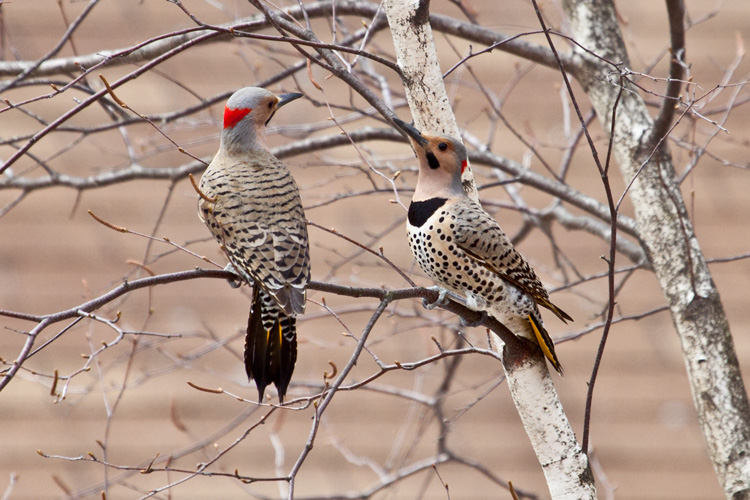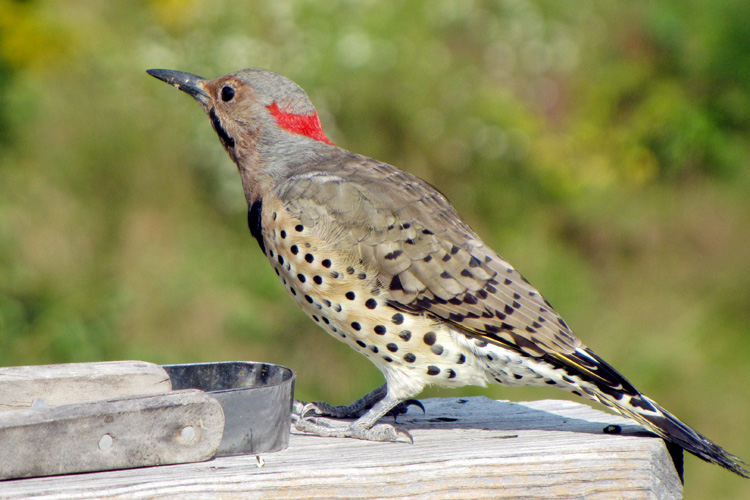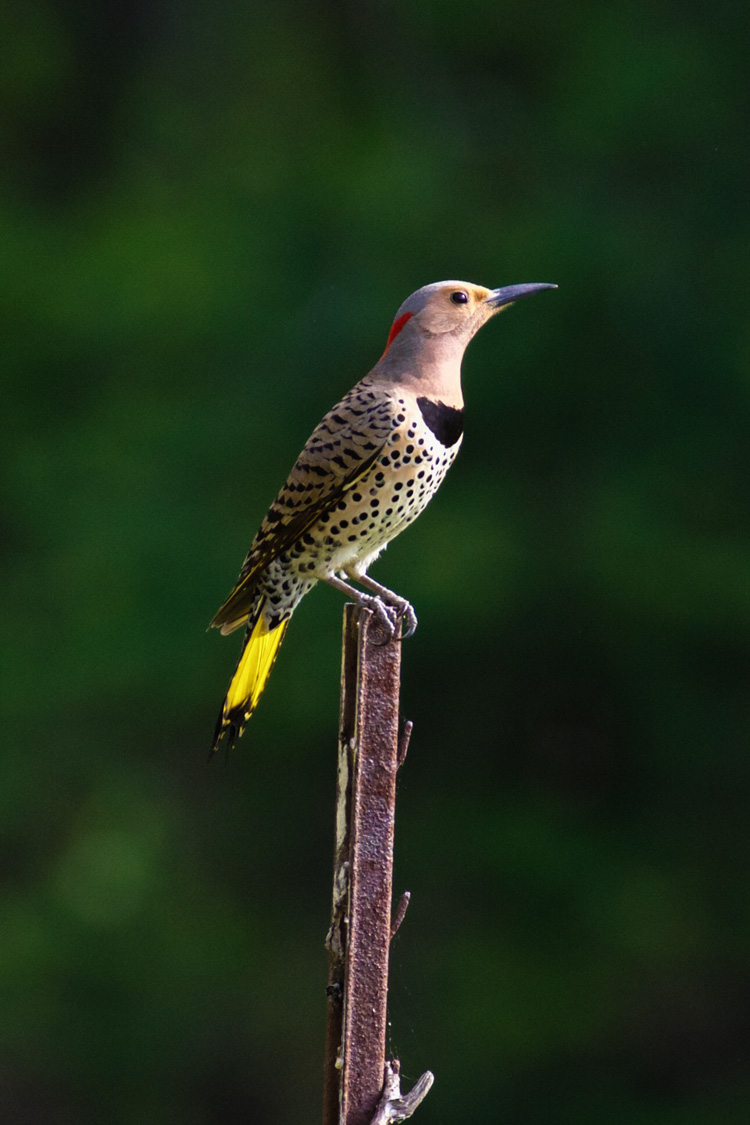Of the seven woodpeckers found in Massachusetts, the Downy Woodpecker has the distinction of being both the smallest and most common—they can be found almost anywhere there are trees.
With insects making up the bulk of their diet, downies will pick and peck at tree bark in search of tasty insects and will often crawl out to the tips of smaller branches that larger woodpeckers can’t access. They are also eager feeder visitors, enjoying both seeds and suet.
You’re much less likely to spot the Downy’s larger cousin, the Hairy Woodpecker, which prefers mature forests. They may look alike, but the Hairy’s beak is larger than the Downy’s, and it has all-white outer tail feathers. Both species will drum on trees year-round to communicate but the frequency picks up this time of year as they set up territories. You may even be able to spot the difference by sound: Hairy Woodpeckers drum very fast with long pauses—at least 25 taps/ second; 20 seconds between— while Downy Woodpeckers drum more slowly with shorter pauses—15 taps/second; a few seconds between.
Learn more about Downy Woodpeckers on our website and enjoy these five photos of Downies from our annual Picture This: Your Great Outdoors photo contest.
